Most gardeners that want to raise their own starts from seed will eventually want to buy indoor grow lighting. Good quality grow lights are a great investment!
Indoor grow lights allow the gardener to mimic the sun. Our seedlings and plants can use artificial lighting to photosynthesize, which is the foundation of plant growth.
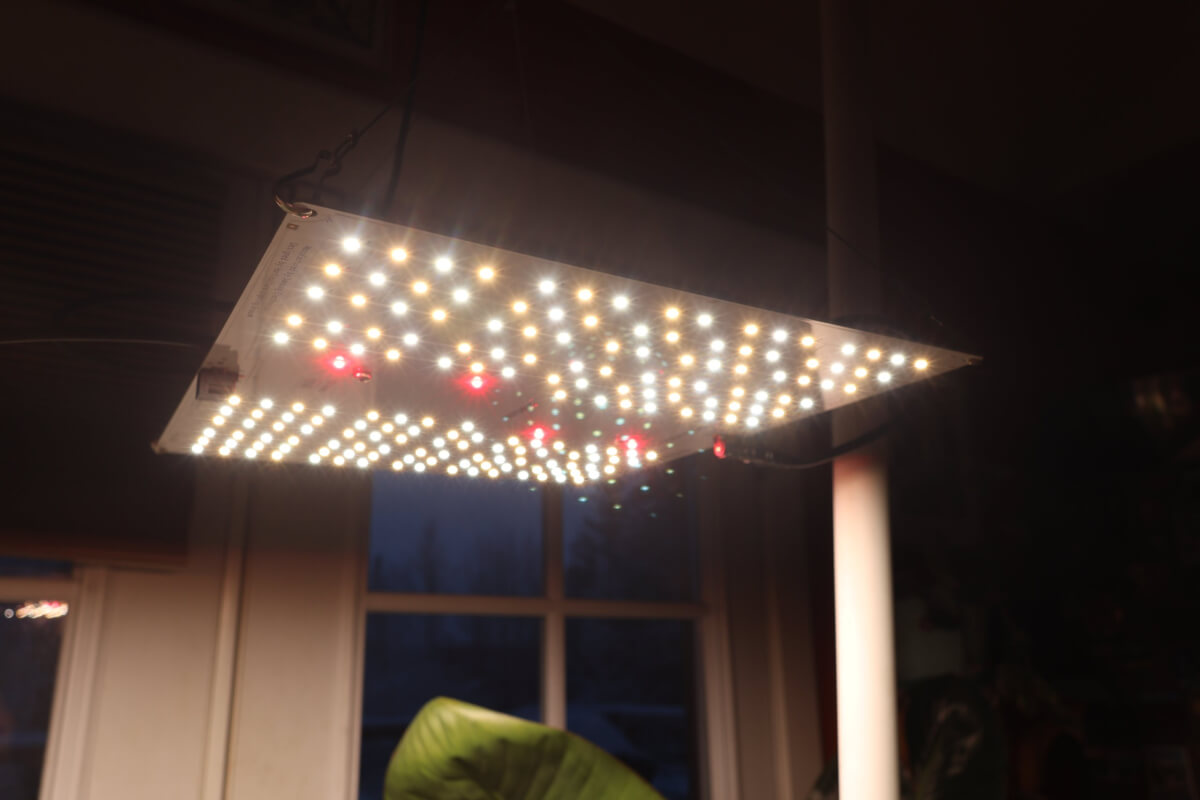
This post will cover some of the reasons we need good quality indoor lighting, major technologies out there and the pros & cons to each technology.
An Overview Of Major Indoor Grow Lighting
There are three major types of lighting that are generally suitable for use in indoor garden plant lighting. These types of lights are:
- Fluorescent
- HID (or high intensity discharge)
- LED (or light emitting diode)
The three major technologies mentioned above are all used in various indoor gardening applications.
What will work best for your situation is something you should likely evaluate.
This post aims to explain these different types, provide you pro/con information and hopefully help you figure out what kind of indoor lighting might be right for your indoor garden!
Why Does The Gardener “Need” Indoor Lighting?
This is a really good question to start with. Why do you even need indoor lighting?
Most gardeners understand that plants use the process of photosynthesis in the process of their growth. Photosynthesis is essentially the process of turning light energy into chemical energy that fuels the plant’s growth.
The sun is a very powerful source of light. We know that it is very good at sustaining plant life all over the planet.

Plants require a certain amount of that light energy to grow well. This energy could be measured in terms of intensity, or the amount of power behind that light source.
When the gardener is trying to mimic the sun indoors, it’s important to think about that effort in terms of providing your plants both the light spectrum and energy intensity that it needs.
When you try to grow plants with insufficient lighting, the plant will instinctively “reach” for more light. The plant “thinks” that if it grows a little bit taller, maybe it can reach the light.
Growing plants under insufficient lighting results in plants that are trying to “reach” for light that simply isn’t there. This results in plants that become what is called “leggy” – or much taller than they really should be.
Leggy plants are generally considered a poor start for a plant. Such plants will have a hard time at life and may never be able to recover. This is the biggest reason the indoor gardener needs appropriate indoor lighting!
Photosynthetic Active Radiation & Plant Growth
A very quick introduction to light would tell you that light, as we see it, is created from a multitude of frequencies. These frequencies represent, essentially, different colors of light.
What we see as light is actually comprised of many different colors of light!
Research has shown that plants are known to use a specific light spectrum, or frequency, of lighting. This spectrum is called PAR or photosynthetic active radiation.
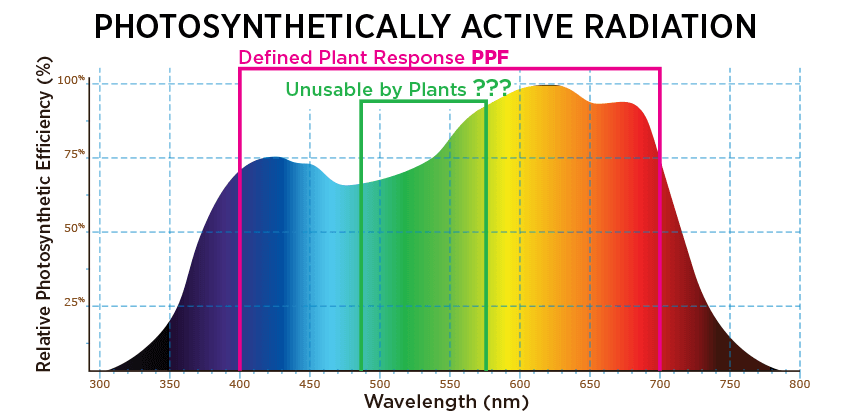
When it comes to PAR, this is a more specific range of light frequencies that plants use to photosynthesize. The spectrum ranges from blue (cool) to red (warm) with green and yellow frequencies in between.
Without delving deep into lighting and specific plant complexities, there are a couple things to know about light spectrum. Generally speaking:
- Blue light spectrum is great for vegetative phases
- Red light spectrum is used more heavily in flowering and fruiting
The sun is a very bright light source. It is great at providing both plants and humans what they need from a light requirement perspective.
Indoor lighting, however, is most often made for humans, not plants. That isn’t to say that plants can’t also use that same human based lighting.
What is most important, however, is that the plant receives lighting that produces PAR, in sufficient intensity.
Fluorescent Lighting And The Indoor Garden
Fluorescent lighting is one of the most common types of lighting used for seed starting. Fluorescent lights come in many varieties and sizes that can suit your indoor garden purpose.
These varieties range from the common light bulb format to “tube” varieties that are better at covering a larger area. Any of these fluorescent bulb varieties will technically work for plant growth!
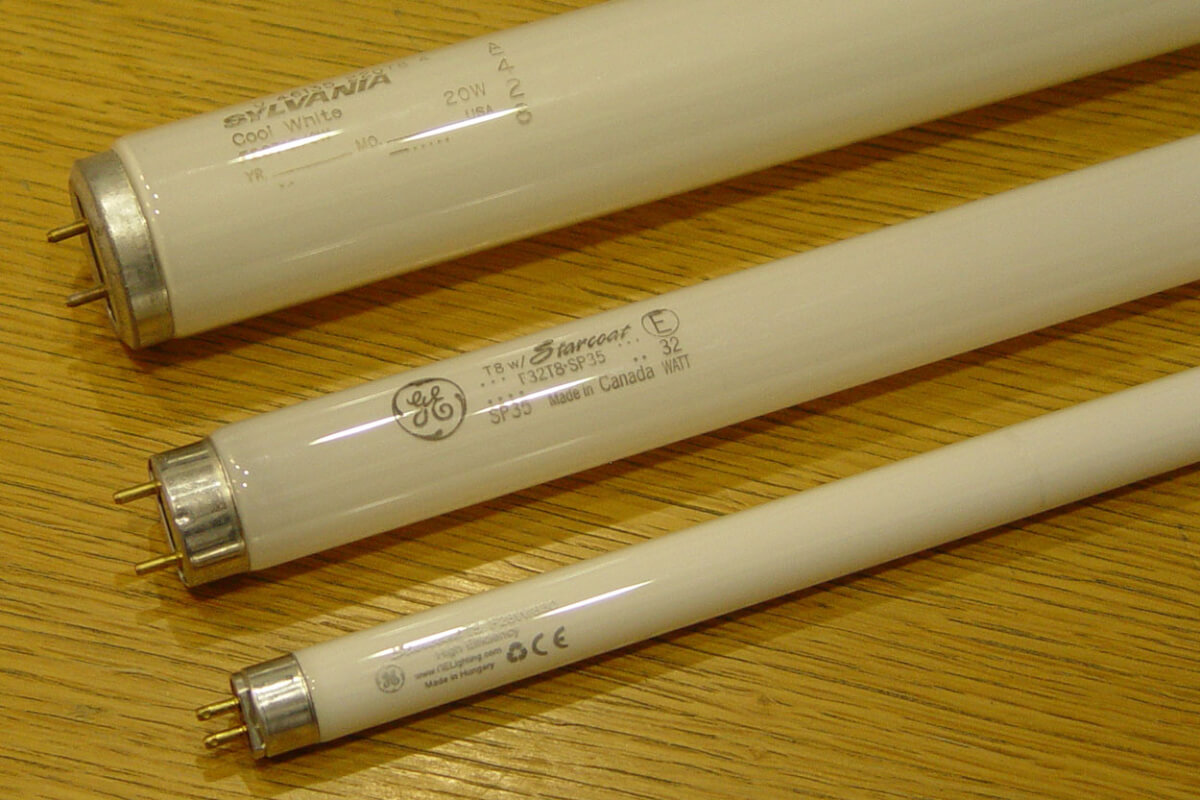
This picture shows multiple types of florescent light bulbs, specifically in a tube configuration. Tube configurations are often ideal for the gardener since they cover more space economically.
Remember what we said above about light intensity being important?
There are also fluorescent lights that are specifically marketed to gardeners. These bulbs are typically considered “high output” and thus they produce more light than the common household fluorescent bulbs would.
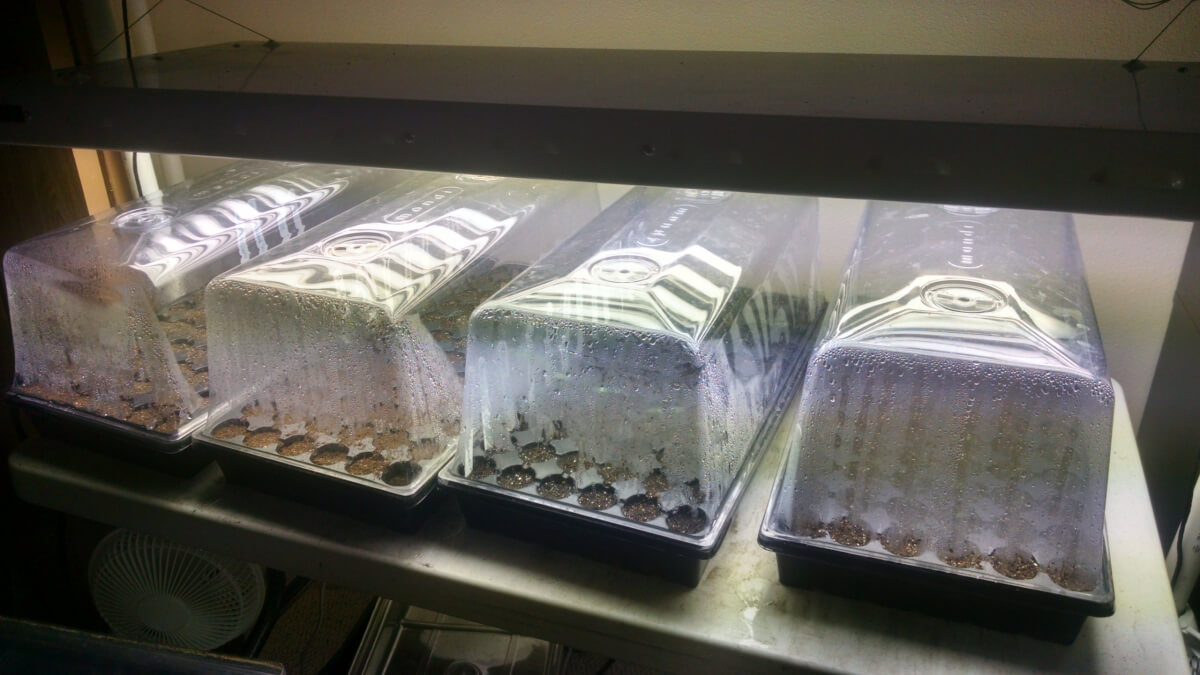
This was our “old” 6-bulb T5 grow lighting setup. We’ve since replaced all of these lights with newer LED’s.
These gardening-specific high output florescent bulbs are called a T5 variety. They have a few advantages over regular tube bulbs, including:
- Higher (more intense) PAR output
- Customized frequency range (more blue vs. red or vice versa)
- Lower heat output
Most importantly, these high output bulbs are stronger than typical home-focused fluorescent lights. This helps with keeping tight plant growth, which results in less “leggy” plants.
Multi-bulb fluorescent fixtures allow you to easily cover large areas, such as as a table that contains seedling trays. You will generally see two, four, six and eight bulb fixtures available on the market. More bulbs provide greater light strength and greater coverage area.
Fluorescent Lighting Advantages:
- Generally less costly than other types of lighting
- Ease of covering larger areas
- Decent energy efficiency
- Low heat output
- Sufficient light spectrum for plants
Fluorescent Lighting Disadvantages:
- Not particularly strong, especially when dealing with thick plant canopies
- Requires semi-frequent bulb replacement
- Typically are big and bulky, requiring a lot of space for use and storage
- Often not as good at covering larger areas
LED Lighting And The Indoor Garden
Arelative new-comer to the indoor garden lighting are LED lights. Though they are relatively recent to the indoor garden lighting market, they do show great promise by providing the gardener some significant advantages.
LED stands for light emitting diode. It’s essentially an electrical component that emits light.
Originally, LED lights were prohibitively expensive and thus, were more commonly used by cannabis growers.
These days, however, the cost of LED lights have dropped considerably, which makes them a practical consideration for general gardeners.
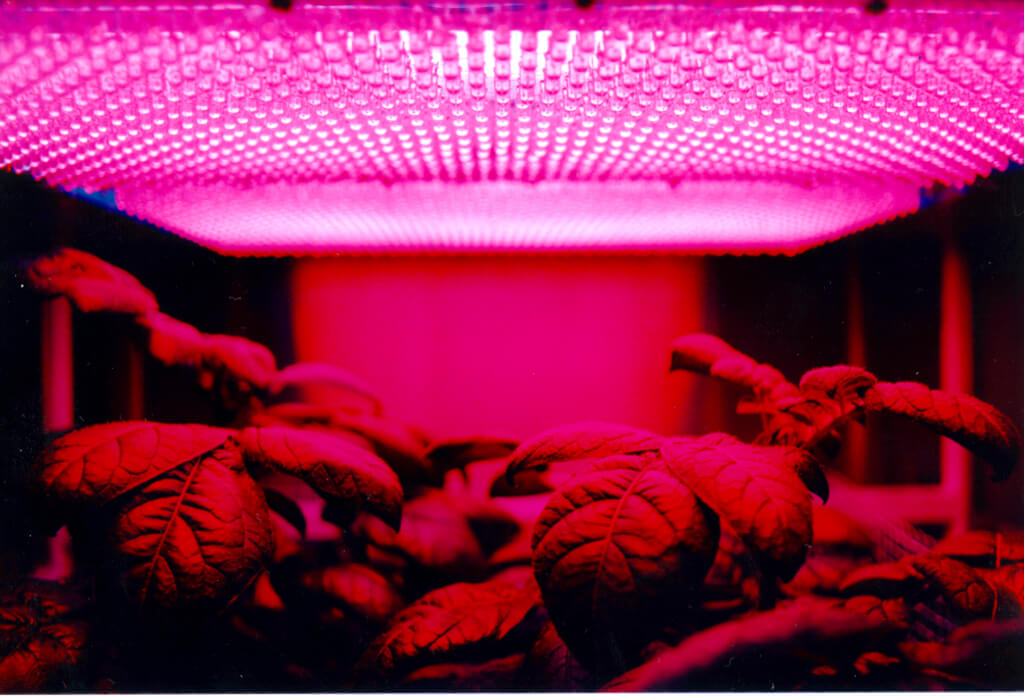
This is a picture of common LED lighting that is specifically marketed towards gardeners. Modern LED’s often produce “full spectrum” lighting, which makes it look more natural than this older multi-spectrum lighting style.
Early generation LED’s were, honestly, not really that good. They used low wattage LED’s, which weren’t great at providing light penetration. Manufacturers also weren’t addressing all of our plant’s lighting needs, providing limited spectrum lighting.
However, the LED lighting market has been advancing at an extremely fast pace.
Newer LED lights are both more effective and have also come down considerably in price. Manufacturers have started to get really good at making LED lights that are really good at growing plants!
LED Lighting Advantages:
- Ease of covering larger areas
- Very high energy efficiency
- Low heat output
- Customized light spectrum for plants, high in PAR
- Extremely long (10+ year) life span
- Low operational cost
LED Lighting Disadvantages:
- Typically one of the most expensive solutions
- Low output LED’s can be insufficient to penetrate plant canopies
- Lots of different commercial options, but not all manufacturers produce a good product
- Commonly can require multiple lighting systems to cover larger spaces
Given our very high electricity costs, we have migrated all of our indoor garden lighting to LED systems. For us, the operational cost savings has been fully worth the additional cost.
Notes About Modern Full Spectrum LED Lighting
You will likely come across terms like “multi spectrum” and “full spectrum” if you are looking at LED’s.
The LED industry is moving towards full spectrum LED’s, or natural looking lighting. If you are considering LED, we recommend full spectrum LED lighting.
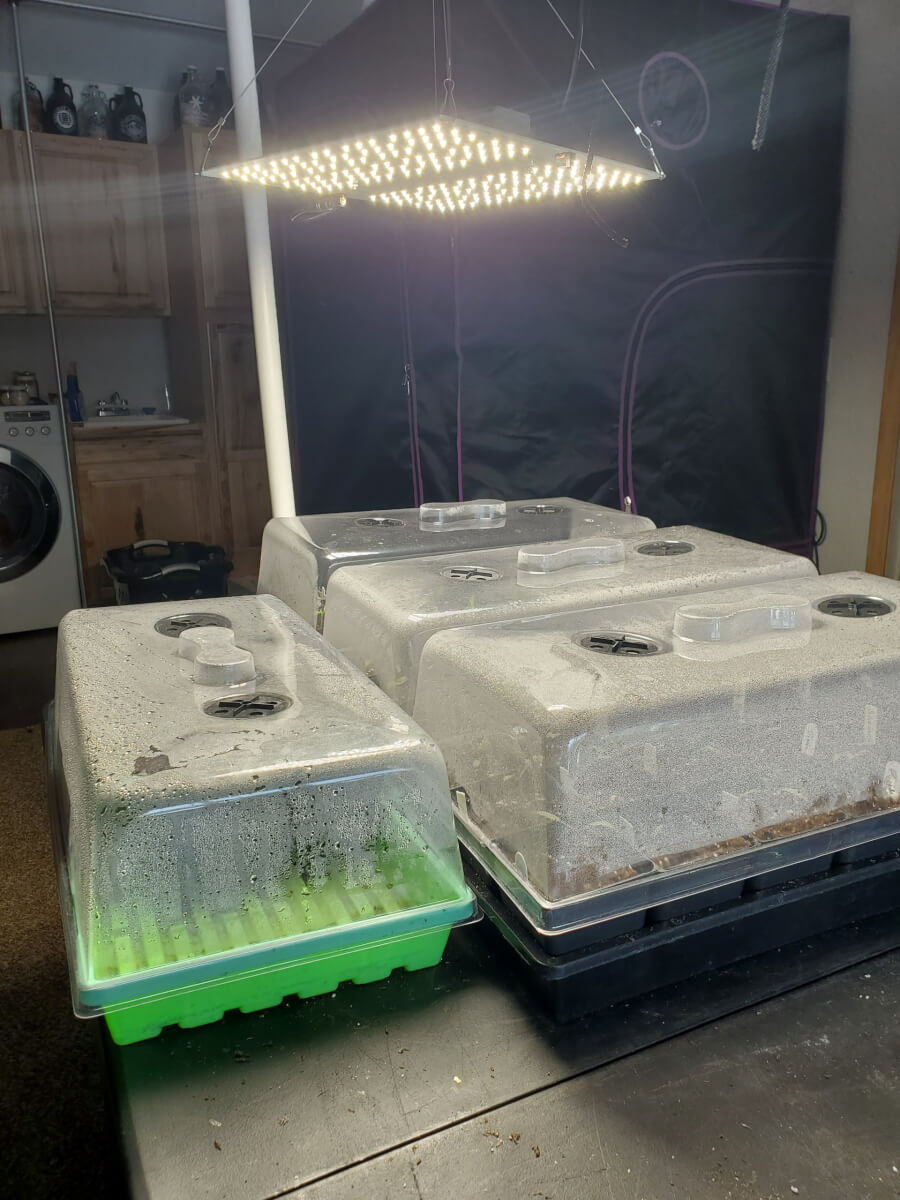
This is one of our Quantum Board LED light fixtures. It is one of the most modern lighting systems available today.
There are also many purple/blue/red LED’s on the market. This spectrum is not natural to our eyes and presents with a strong purple color.
The purple LED’s can prevent your ability to see plant deficiencies and other plant problems.
While these lights will grow plants, the purple color of the lighting can also be somewhat irritating to some people. Full spectrum LED’s provide a more natural light and are superior in this regard.
High Intensity Discharge (HID) And The Indoor Garden
You have seen these types of lights before, they are most commonly used in street lamp applications.
HID lighting is probably considered somewhat “old” in modern indoor gardening terms. It was very popular in years past, but has largely been supplanted by fluorescent and LED lighting these days.
That said, many gardeners still use them and they have a place in some situations.
High intensity Discharge bulbs, true to their name, provide a very robust amount of light. It is typically stronger than any of the above sources of lighting.
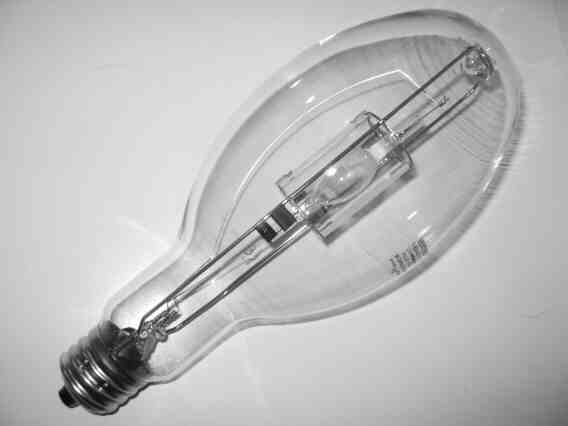 There are two major types of HID lights:
There are two major types of HID lights:
- Metal Halide – Provides a cooler/blue spectrum ideal for early and vegetative growth.
- HPS, or high pressure sodium – Provides a warmer spectrum which is good for flowering and fruiting purposes.
HID lights use what is called a ballast to create the very high energy levels needed to run these lights. Modern digital ballasts include features like the ability to use both metal halide and HPS bulbs, as well as selectable power settings that will allow you to use less energy.
For most gardeners interested in growing garden starts, HID lighting is a bit of overkill. However, they will give the indoor gardener some of the best results available.
HID lights tend to more easily cover large areas, such as 4 foot by 4 foot grids, making them an ideal choice for the larger scale gardener. There are modern LED equivalents that can do the same thing, though.
If you also delve into year round indoor production, they could be an ideal choice for you.
HID lights are usually sold by the number of watts, which is essentially how much energy it will draw while running. Common values are 150, 250, 400, 600 and 1000 watt varieties.
Bigger is not always better. Your specific application and desired footprint coverage will determine the size needed.
Generally, the lower end wattages will cover 2×2 or 3×3 foot spaces, whereas the larger units can cover 4×4 foot and even larger. If you are able to get a digital ballast with selectable power settings, it may be desirable to go a bit larger and dial it down for your needs at the time.
HID Lighting Advantages:
- Ease of covering larger areas
- Fairly energy efficient
- Inexpensive compared to fluorescent and LED options
- Modern digital ballasts can allow metal halide or HPS bulbs, easily allowing the gardener to switch light spectrums
- Can create a fair bit of heat, which can be beneficial in some situations (i.e. in unconditioned areas)
- High plant canopy penetration, good for full cycle growth
HID Lighting Disadvantages:
- High heat output
- Bulbs will require semi-frequent and costly replacement
- High operational costs
- Bulbs are very sensitive and require careful handling
It is common to see HID lights used with reflectors, which will help direct the light energy towards your plant.
Hood type reflectors are great for easier cooling, where ducting can be connected to inline fans to evacuate the heat. Gull wing reflectors are simpler to operate, however, will be more difficult to keep cool.
We have used these types of lights in the past and they are excellent at providing rapid plant growth.
So Many Choices! Just Help Me Choose A Light!
For a sure fire, easy experience, your best bet will be an appropriately sized fluorescent bulb fixture.
This will be plug and play, relatively inexpensive and reasonably energy efficient. They will be a very reliable workhorse, year after year, and will get the job done effectively.

However, we think it’s really important to consider the operational costs when it comes to indoor garden lighting!
LED is definitely going to be your choice there. These have become extremely popular in recent years, which has also brought the cost down significantly.
As we mentioned above, we have entirely transitioned to using LED lights in our gardens.
Our current specific light recommendation are called Quantum Boards. In particular, we like the US made HLG LED lighting. They are very capable lights.
Eventually, LED lights will pay for the cost differences of other types of lighting and will benefit you over the long term.
That’s All We Wrote!

Having a good time? We have an ever growing list of insightful and helpful subarctic & cold climate gardening articles, waiting out there for you!
- Cold Climate Gardening Basics 👉
- Growing Your Garden From Seed Indoors 👉
- Advanced Cold Climate Gardening Techniques 👉
- Plant Specific Cold Climate Growing Guides 👉
- Subarctic Perennial Food Forests & Foraging 👉
- Indoor Garden Lighting & Grow Rooms 👉
- Greenhouses & Temperature Control 👉
- Harvesting & Food Preservation 👉
- Solving Cold Climate Garden Problems 👉
- 1 Minute Reads On Tons Of Garden Topics 👉
FrostyGarden.com is 100% ad-free and we do not use affiliate links! This resource is voluntarily supported by our readers. (Like YOU!) If we provided you value, would you consider supporting us?

It would be much more helpful if you gave local source options for some of the lighting sources you describe. You may know who has a good selection but the rest of us might not.
Hi RJ! Sorry you found our sources inadequate. The difficulty we’d face is “local to whom?” We get readers from Alaska, Canada, northern US, Norway, Sweden and all over the north. It would be difficult at best for us to provide local sources for anything we might recommend, so usually places like Amazon are at least a “more universal” approach. We do always recommend working with and supporting your local nurseries, especially ones that have comprehensive supply. (It’s important for them to stay in business!) Nonetheless, we are a friendly bunch, so if you have a question about where to get a particular thing, we can do our best to point you in the right direction.